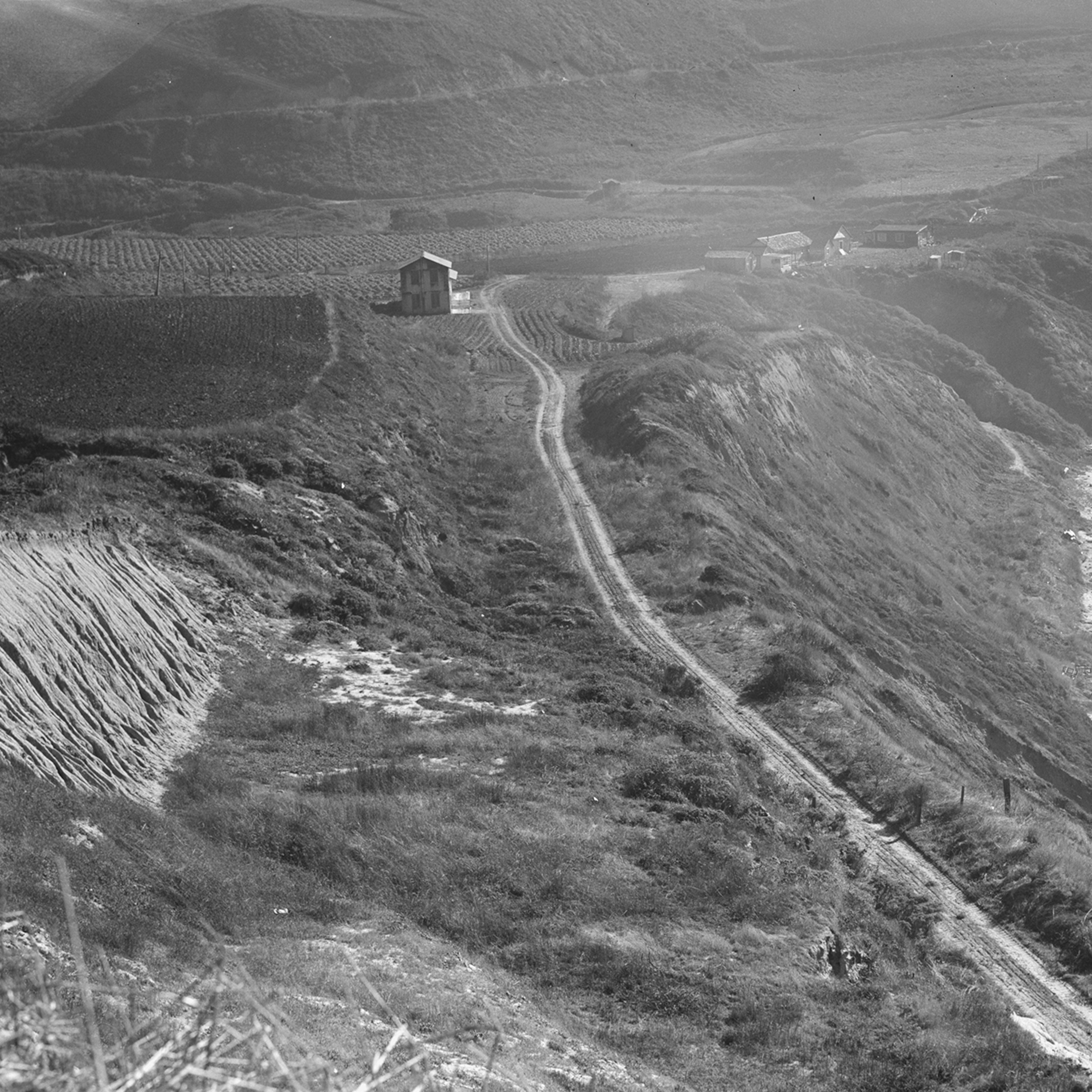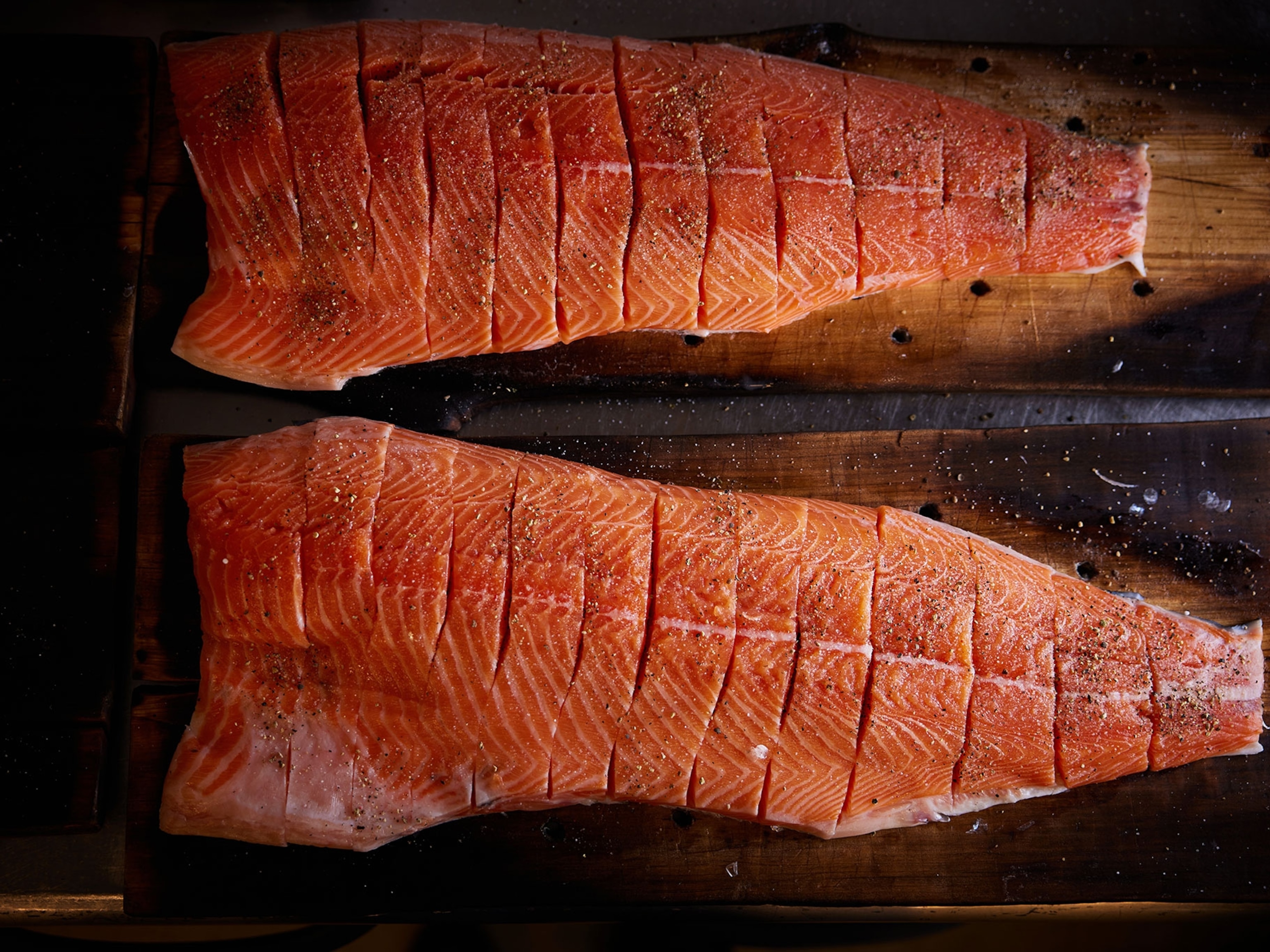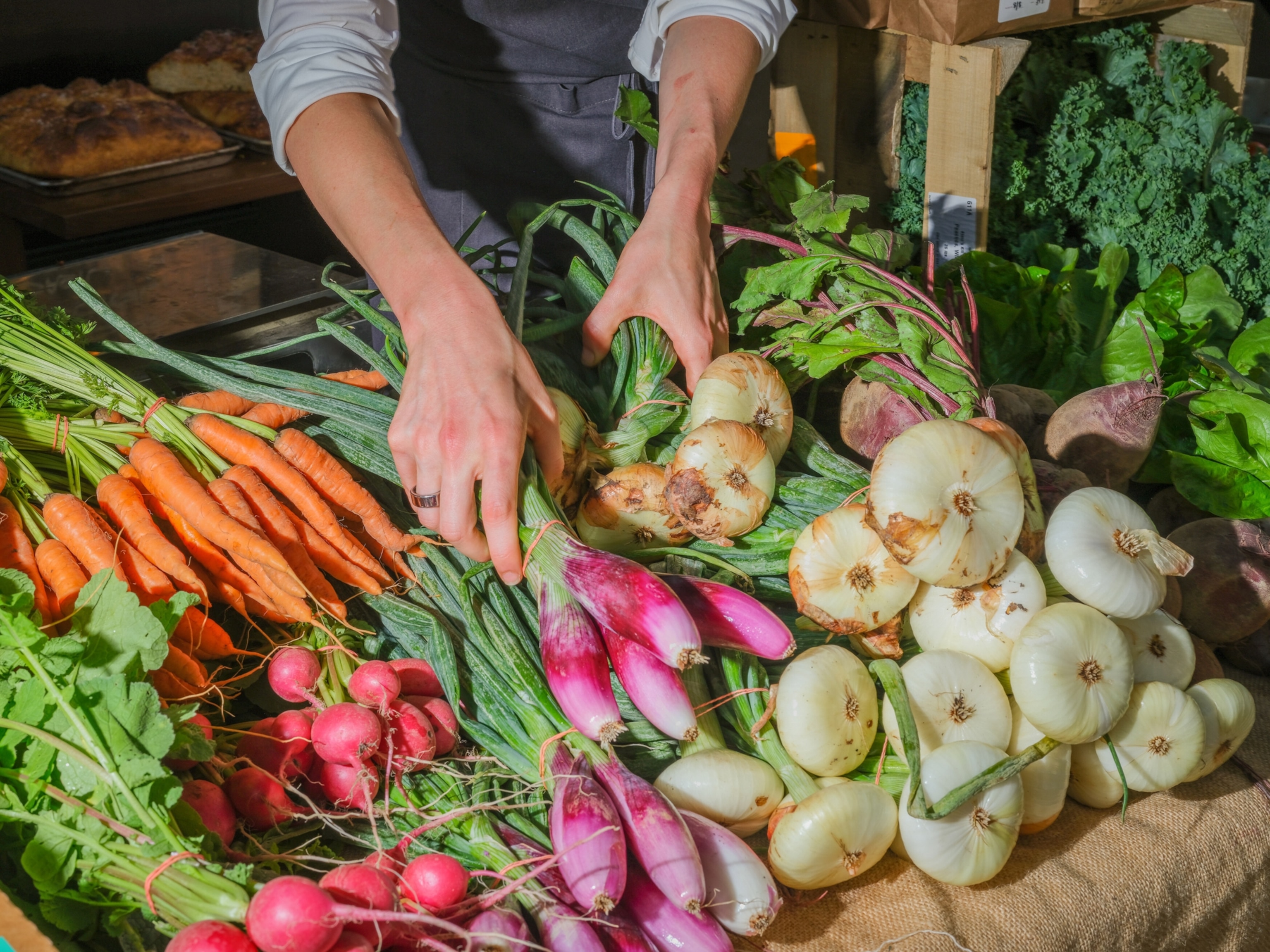Hoping for health and fortune in the new year? Put this meal on your menu.
From Hoppin’ John to smoky collards, these Gullah Geechee Low Country staples are a mash-up of West African and Native American culinary traditions.
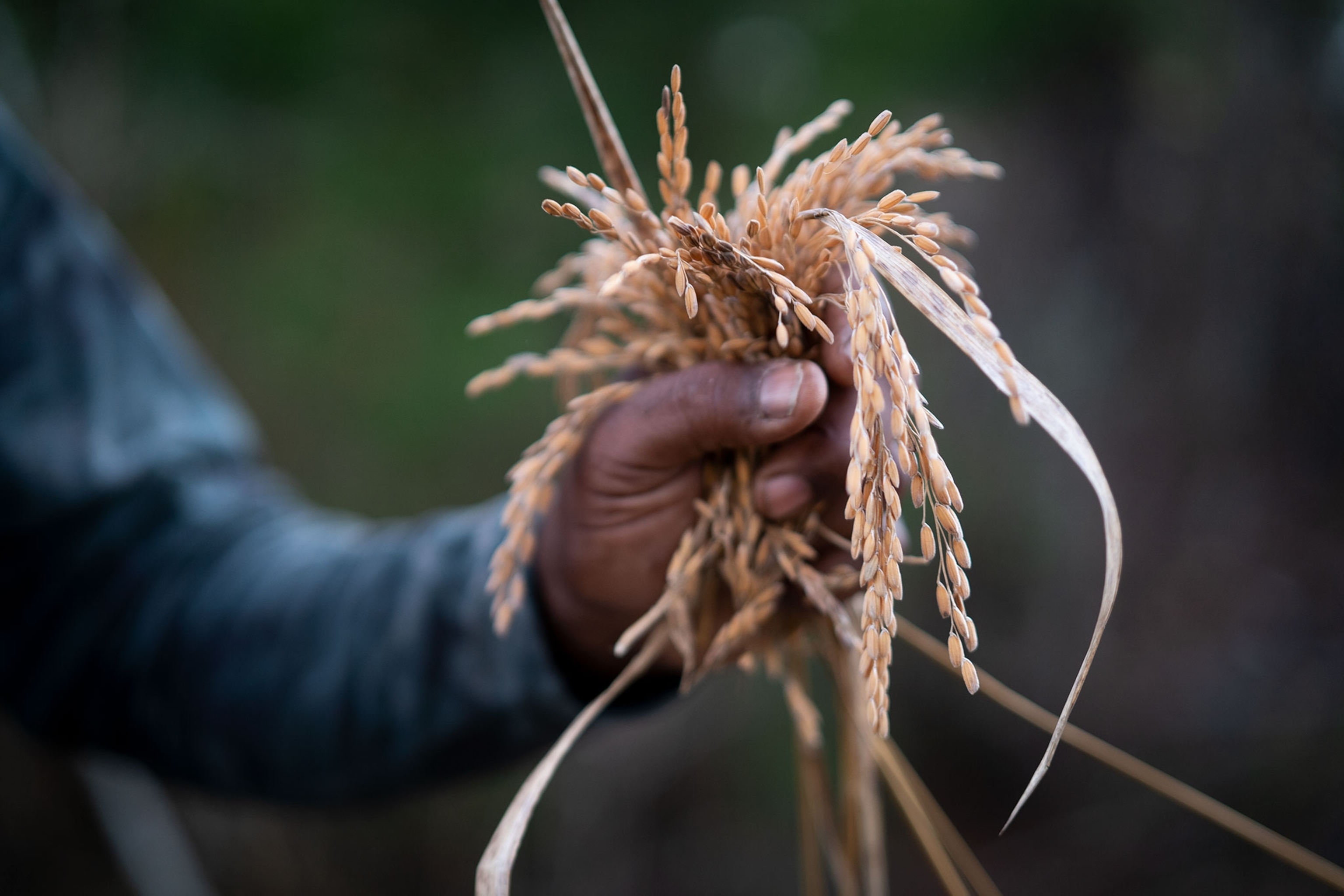
For some African Americans living on the southern East Coast of the United States, a long tradition of eating plant-based whole foods—so-called blue-zones-type foods—has been handed down from generation to generation. The Gullah Geechee people are descendants of enslaved West Africans captured in places such as Senegal and Angola and brought to the Low Country of South Carolina and Georgia to cultivate Carolina Gold rice.
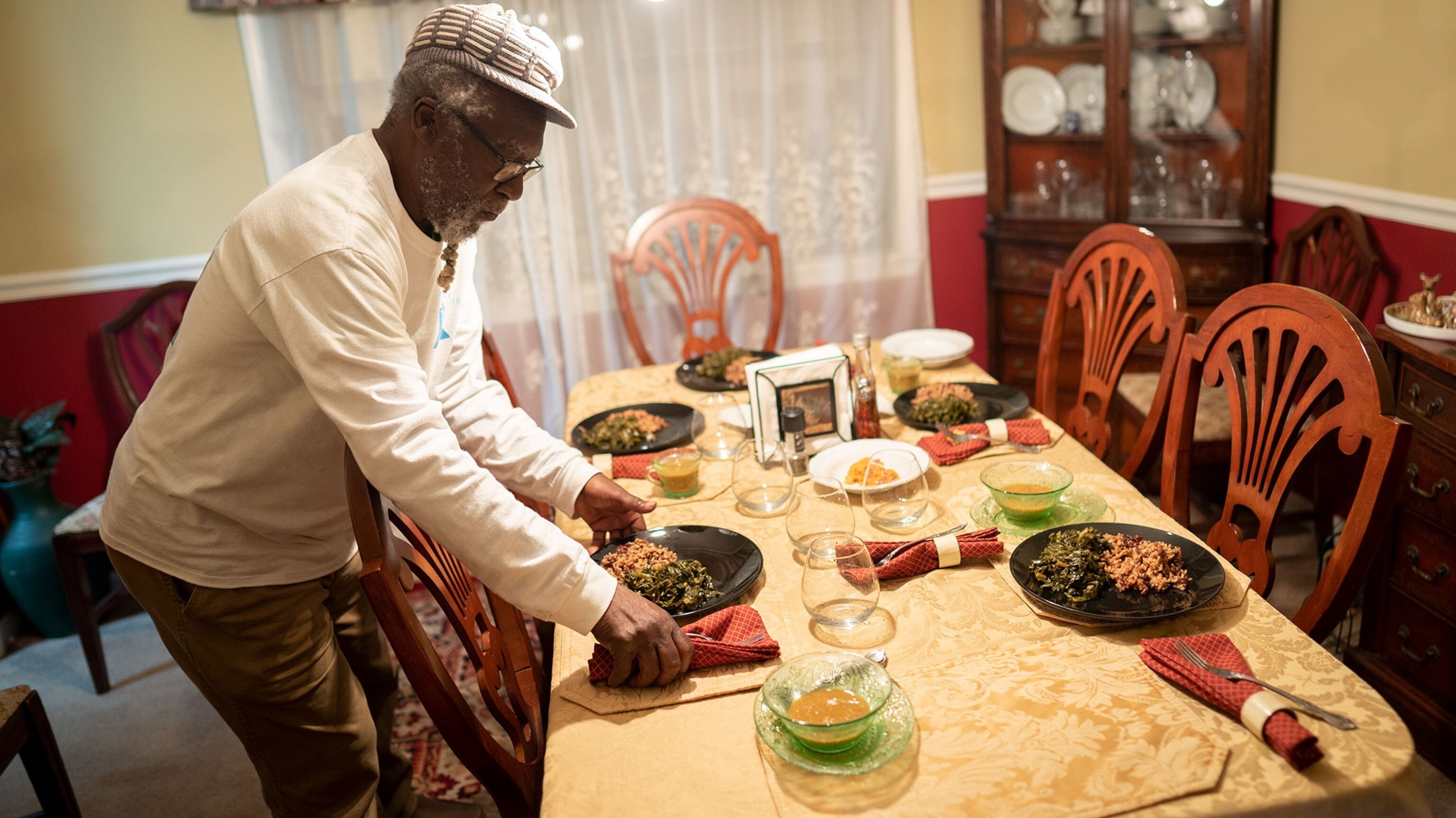
The traditional West African diet was essentially vegetarian—consisting mostly of greens, root vegetables, black-eyed peas, okra, benne (sesame) seeds, and cereals like millet. Enslaved West Africans brought with them to America the seeds of their native foods and entered into cultural exchanges with Native Americans; the two shared some similar farming practices and food staples. For example, both cooked with corn, sweet potatoes, and local bean varieties. The result was a blended, innovative cuisine, all made from ingredients that support longevity.
For instance, the staple dish Hoppin’ John—which is supposed to bring good luck if eaten on New Year’s Day, according to Gullah Geechee tradition—blends West African ingredients such as black-eyed peas, rice, and greens with North American accoutrements such as thyme, celery, and corn bread (see recipe below).
According to Herbert C. Covey’s What the Slaves Ate: Recollections of African American Foods and Foodways From the Slave Narratives, several culinary tendencies that traveled with enslaved people from Africa to the Americas are signature dishes and techniques in the United States, including fritters, boiled greens, rice dishes, and the use of okra, nuts, and seeds as thickening agents. Enslaved Africans and their descendants also had a well-deserved reputation for spicy, hot food. Their knowledge of seasonings and spices transformed simple, bland foods into zesty meals.

Keeping traditions alive
While researching my new book, The Blue Zones American Kitchen: 100 Recipes to Live to 100, which uncovers lost American longevity diets, I went in search of chefs who have kept Gullah Geechee culinary traditions alive and are bringing them into the 21st century, like Charleston’s BJ Dennis. Dennis is on a mission to bring back the cuisine of his rice-growing ancestors. “We took the rustic soul of the Africans and the Native American techniques and made this special mash-up,” says Dennis. The resulting cuisine is uniquely American, explosively delicious, and as I’ve been discovering, it draws from ingredients that support longevity.
In Savannah, Georgia, we met Roosevelt Brownlee, a 75-year-old dreadlocked Gullah chef who has cooked for the likes of Stan Getz and Nina Simone. In a backwoods kitchen, he and his cousin Rollen Chalmers whip up “pink-eyed soup,” hoecakes, and red peas—all accompanied by Carolina Gold cracked rice. As his T-shirt proclaims, “Rice Is Life.” Who am I to argue?
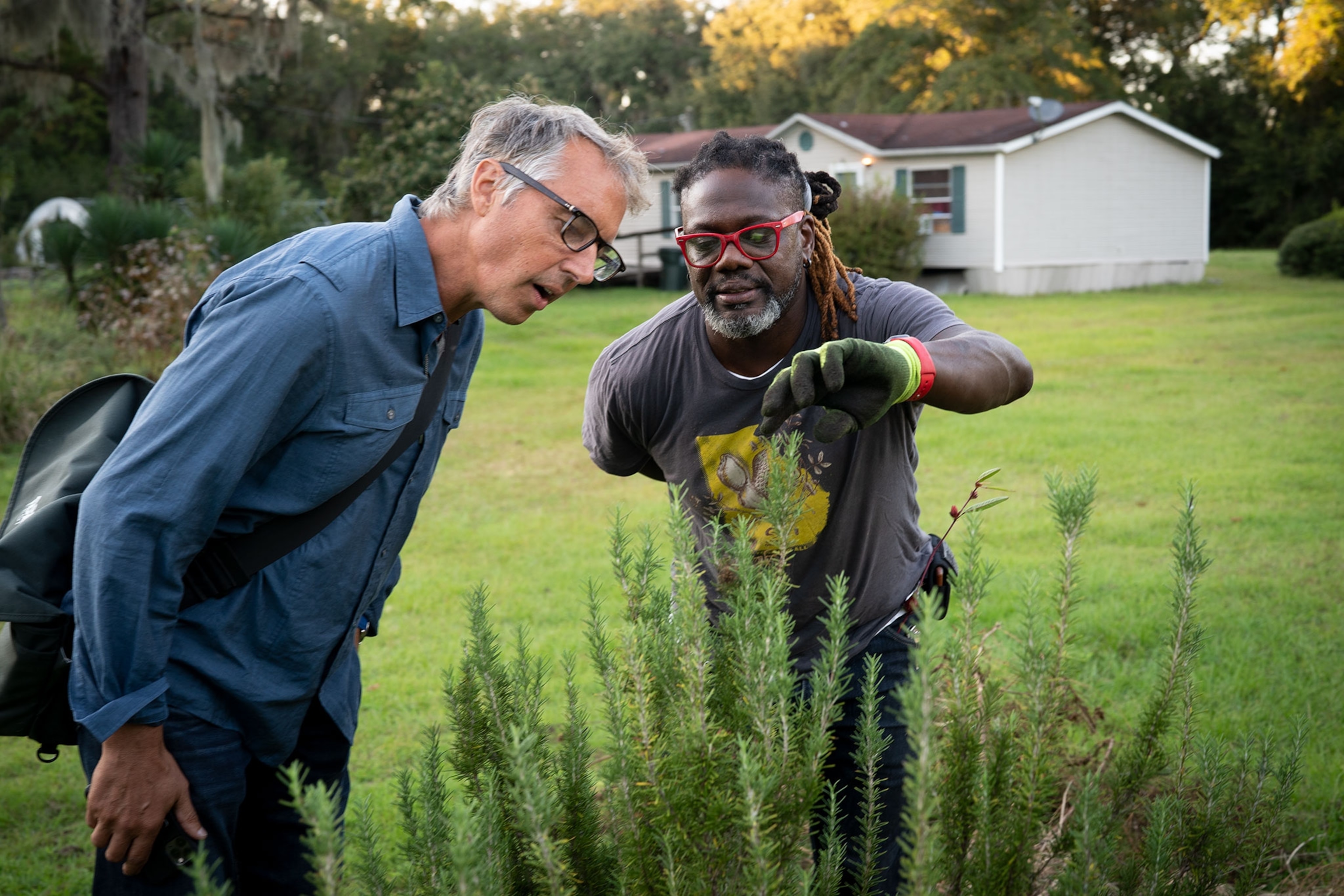
Matthew Raiford, a celebrated chef who once cooked at the White House, started his training with his great-grandma Florine and honed it at the Culinary Institute of America. He’s also an ecological horticulturalist, certified by the University of California’s Santa Cruz Center for Agroecology.
Today, at the behest of his grandmother, he’s taken over the family farm in Brunswick, Georgia. He tours us past his hen-of-the-woods mushrooms, the old truck tires that serve as sweet potato planters, and the vast hibiscus plants he uses to make teas. He prepares exquisitely simple black beans (served with spring greens and pickled cucumbers or wrapped in a tortilla) and collard greens (slow-cooked—never boiled—for 45 minutes with red pepper, white onion, and vinegar). Collard greens are another New Year’s tradition (see recipe below). In Gullah Geechee culture, leafy greens and cabbage symbolize money and eating this beloved dish on New Year's Day will bring prosperity to you and your family in the coming year.
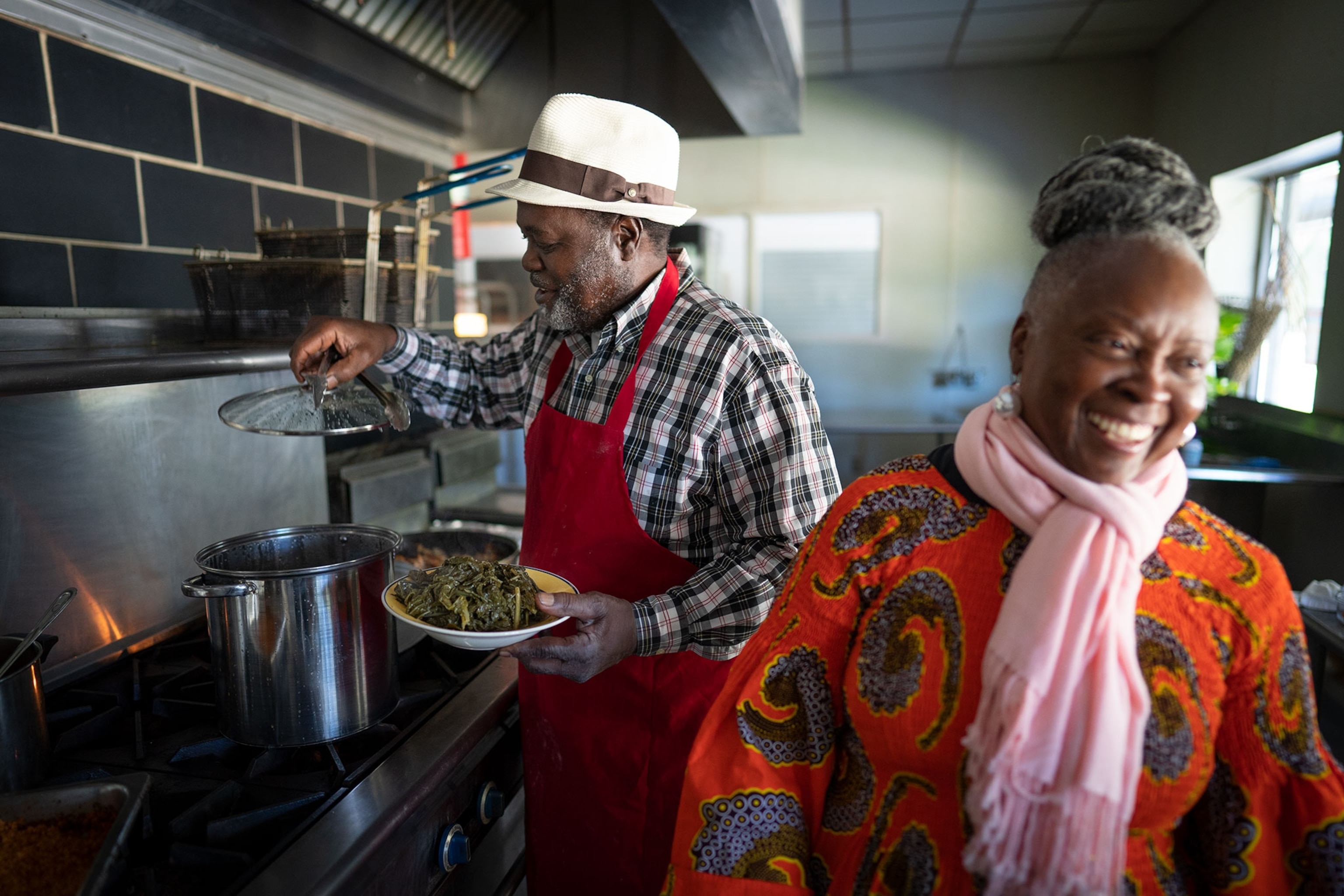
On St. Helena Island in South Carolina sits the Gullah Grub Restaurant, owned and run by the ever-ebullient Gullah chef Bill Green who welcomes us to the community kitchen he uses to prepare 500 meals per week, mostly for kids in need. Wearing a plaid shirt, red apron, and broad-rimmed white hat, and sporting a gray-flecked beard, he shows us how to make Stir-Fried Cabbage and Beets and Red Cracked Rice. “If you’re smiling or laughing, that’s going to come out in the food. All you have to do is look at a man to know if his food is good or bad,” he says. In Bill’s case, his smile turns out to be deliciously prescient, because his food couldn’t be better.
Keys to longevity
His spirit is emblematic of the Gullah Geechee sense of community. As in the five original blue zones, social interaction is a key part of longevity. In Okinawa, tightknit circles of lifelong friends are called moai; in Sardinia, Ikaria, and Nicoya, families live in multigenerational homes, grandkids and grandparents living together, side-by-side. Likewise, in the Low Country, community is everything to the Gullah Geechee, and along with plant-based foods, their traditions of togetherness, shared Sunday suppers, and helping those in need may just be the key to unlocking longevity.
Hoppin’ John With Carolina Gold Rice and Sapelo Red Peas
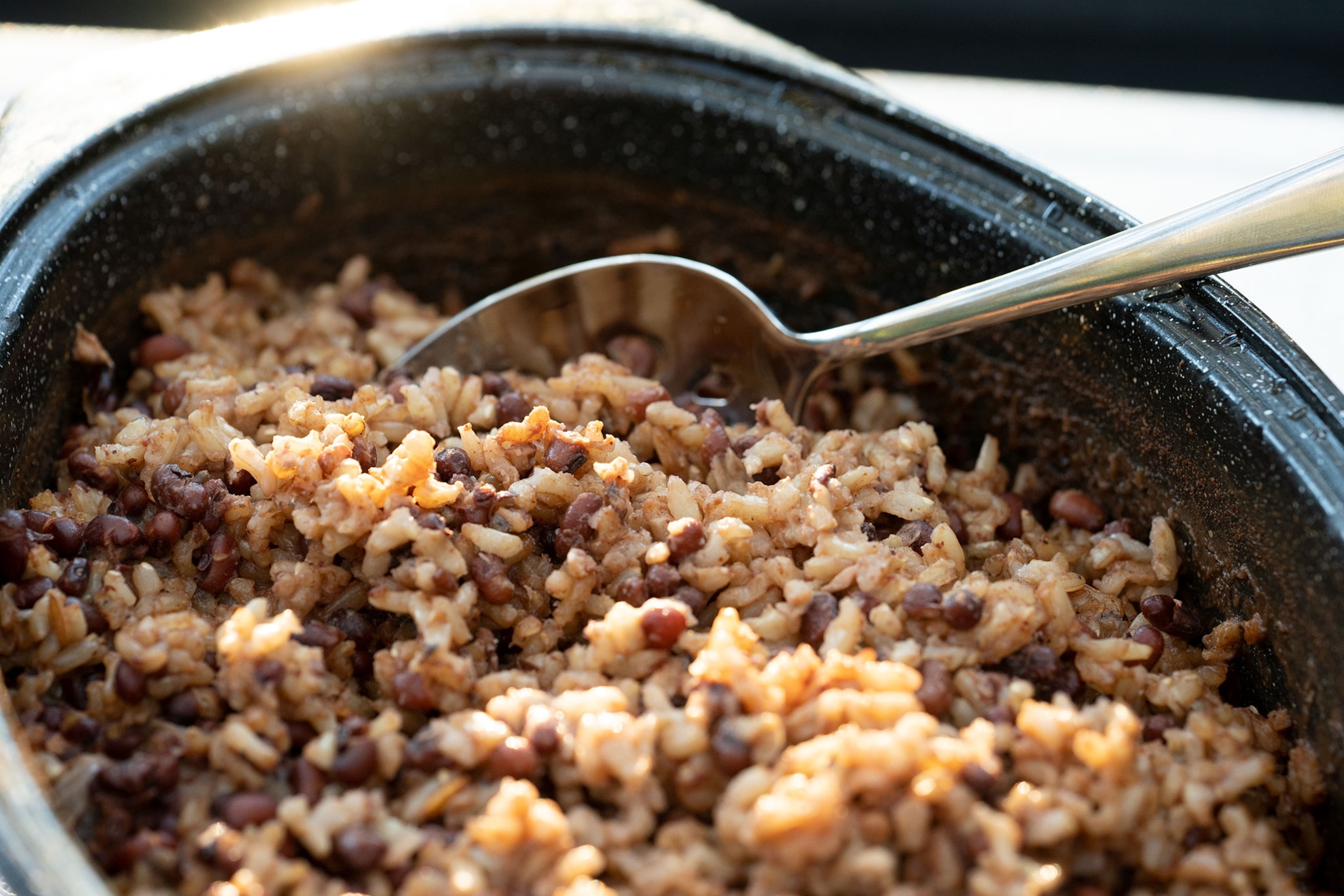
Ingredients
• 1 cup Sapelo red peas
• 1 teaspoon salt
• ½ teaspoon freshly ground black pepper
• 1 teaspoon smoked paprika
• 3 cups water
• 2 cups Carolina Gold rice
1. Preheat the oven to 350°F.
2. In a large pot, combine the peas, salt, pepper, and paprika. Add the water and bring to a boil.
3. Reduce the heat to low and simmer for 30 minutes.
4. Put the rice in a 9-by-13-inch baking dish, and pour the pea mixture over the top. Cover the baking dish with aluminum foil and bake for 30 minutes.
5. Serve hot.
Carolina Gold rice is a unique heirloom grain that’s unlike the supermarket rice most of us are used to. A West African strain, it was first grown, cultivated, and cooked on American soil by enslaved peoples on plantations. In the 19th century, it became the dominant rice in the U.S. market, only to all but completely disappear after the Great Depression. Though you couldn’t find it on grocery store shelves for decades, it was legendary in the Low Country for its unique starchiness and earthy, nutty flavor. Thanks to a handful of industrious growers like Rollen Chalmers who are reviving such heirloom grains, you can now find Carolina Gold rice again on grocery store shelves and online.
Smoky collard greens
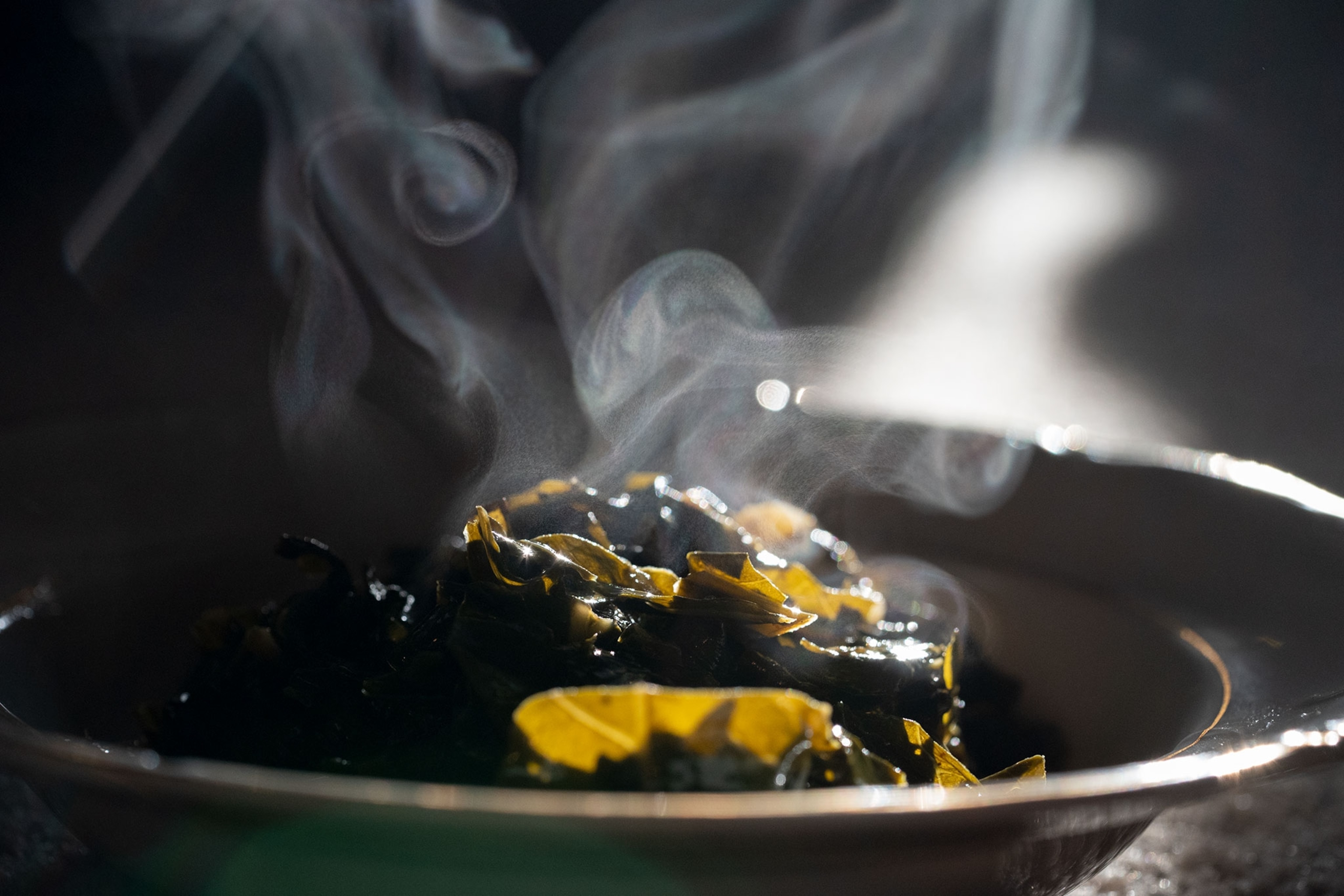
Ingredients
• 3 tablespoons benne oil (or sesame oil)
• 1 garlic clove, minced
• 1 onion, sliced
• 2 pounds collard greens, chopped
• 1 tablespoon salt
• 1 teaspoon freshly ground black pepper
• 1 teaspoon crushed red pepper
• 1 teaspoon smoked paprika
1. Heat oil in a large pot over medium heat. Add the garlic, onion, collard greens, salt, black pepper, red pepper, and paprika. Stir to mix the ingredients, and cook until the greens reach the desired tenderness, about 45 to 60 minutes.
2. Serve hot.
Recipes provided by Marion “Rollen” Chalmers, heirloom rice expert and gold rice farmer



